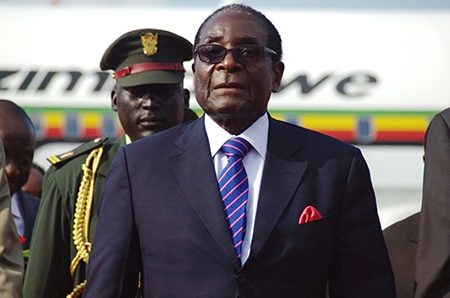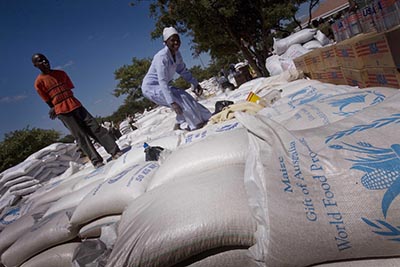 Late afternoon on Tuesday November 21st, 16 million Zimbabweans and the rest of the world received, with wild celebrations, news that President Robert Mugabe had resigned from his position as leader of Zimbabwe, after more than 37 years in power. The news created a mood which was in stark contrast to what had been experienced just two days earlier on Sunday November 19th, when, on a television address, Mugabe did not announce his resignation as anticipated by Zimbabweans and audiences all over the world. While he acknowledged the concerns that had led to the ‘bloodless coup’ on November 14th, his television speech had a ‘business as usual’ tone around it. While millions had hoped for a speech that would herald leadership change, two things in fact emerged - a deepening of uncertainty in Zimbabwe and the never-ending ambition of Mugabe to continue his presidency. But then again, a day is a long time in politics. November 21st came, and as his own ZANU PF and the opposition were in the process of impeaching him, the tenacious leader resigned, and a new era was ushered in.
Late afternoon on Tuesday November 21st, 16 million Zimbabweans and the rest of the world received, with wild celebrations, news that President Robert Mugabe had resigned from his position as leader of Zimbabwe, after more than 37 years in power. The news created a mood which was in stark contrast to what had been experienced just two days earlier on Sunday November 19th, when, on a television address, Mugabe did not announce his resignation as anticipated by Zimbabweans and audiences all over the world. While he acknowledged the concerns that had led to the ‘bloodless coup’ on November 14th, his television speech had a ‘business as usual’ tone around it. While millions had hoped for a speech that would herald leadership change, two things in fact emerged - a deepening of uncertainty in Zimbabwe and the never-ending ambition of Mugabe to continue his presidency. But then again, a day is a long time in politics. November 21st came, and as his own ZANU PF and the opposition were in the process of impeaching him, the tenacious leader resigned, and a new era was ushered in.
The power transition drama of the past one week is a culmination of years of uncertainty in Zimbabwe, and even as the post-Mugabe era begins, the stage is set for new levels and dimensions of uncertainty. But there are numerous sources of leverage for the country, not least the resilience, innovativeness and resourcefulness that the Zimbabwean people have shown over the years.
In the past week world attention was drawn sharply to Zimbabwean people that have, for a long time, yearned for transparent and inclusive economic and political systems that give everyone a fair chance in life. Against all odds, Zimbabweans weathered an economic meltdown of epic proportions for close to two decades, and in this individual and collective resilience lies one of the key tools for the country going forward. The country soldiered through years of hyperinflation and severe food shortages due to a perfect storm of declining agricultural productivity, recurring droughts, economic challenges and lack of enabling policy and financing environments. Our on-going work in Zimbabwe on ‘pro-poor health and nutrition clinics for maternal and child anaemia’ (Guntupalli and Mugwagwa, 2017), shows that the challenges resulted in severe nutritional and health insecurity affecting particularly children, women and older people. While health statistics show underperformance, it is surprising, but important to note, that Zimbabwe’s nutritional crisis is not that alarming given the exceptional situations people in the country were facing. For example, while nearly 37% of children were anaemic in 2015 (Zimbabwe Demography and Health Survey, 2016), this level of anaemia is lower than that of economically booming India, (58%), and many other African countries.
 The health history of Zimbabwe has also displayed this resilience time and time again. For instance, at the start of this century, 26% of the Zimbabwean adult population were either infected with HIV or suffering from AIDS, which reduced life expectancy from 69.5 to 38.8 years. 700 out of 10,000 15-year old Zimbabweans lost one or both parents to AIDS in the same period. No country with such a large-scale impact of HIV/AIDS could escape economic and social challenges. But Zimbabweans stayed resilient and found a way forward. So, what is this resilience and how did they manage?
The health history of Zimbabwe has also displayed this resilience time and time again. For instance, at the start of this century, 26% of the Zimbabwean adult population were either infected with HIV or suffering from AIDS, which reduced life expectancy from 69.5 to 38.8 years. 700 out of 10,000 15-year old Zimbabweans lost one or both parents to AIDS in the same period. No country with such a large-scale impact of HIV/AIDS could escape economic and social challenges. But Zimbabweans stayed resilient and found a way forward. So, what is this resilience and how did they manage?
According to the American Psychological Association (2014) resilience is “the process of adapting well in the face of adversity, trauma, tragedy, threats or even significant sources of stress”. However, several scholars including Southwick et al. (2016) argue that resilience is much more complex and that its determinants could include a range of biological, psychological, social and cultural factors. An interplay of these different factors certainly goes a long way in explaining how Zimbabweans respond to stressful situations. The country’s consistently high literacy rate over the years, underpinned by a battered yet resilient education system also play a part in sustaining the country.
A recent World Bank (2017) report shows that the proportion of the shadow economy is very high in Zimbabwe which might have resulted in less commitment which is “measured as protection of property rights, contract enforcement, and lack of arbitrary expropriation without proper compensation”. It is also important to note that currently, aid to Zimbabwe does not represent more than 10% of GDP unlike several low-income countries especially from Africa. Personal remittances increased substantially from 1.2 billion USD to 2.1 billion USD between 2009 and 2015, illustrating Zimbabweans living outside Zimbabwe supporting their family in Zimbabwe compared to all the neighbours.
During the extreme food crisis, four or five families took turns to go to neighbouring countries to get rations for each other rather than having civil war or a surge in severe violent crimes, which is generally predicted in extreme situations. Zimbabweans found innovative ways of adapting to difficult situations. What resilient Zimbabweans need is a resilient system to help them prosper and play their due role in the global economic and political space, and it is everyone’s hope that the new era will provide this opportunity.
References
American Psychological Association. The road to resilience. Washington, DC: American Psychological Association; 2014 http://www.apa.org/helpcenter/road-resilience.aspx para (4).
Guntupalli, A and Mugwagwa J (2017). Pro-poor health and nutrition clinics: addressing maternal and child anaemia in Mumbai and Harare, The Open University and University College London, United Kingdom.
Southwick S. M, Douglas-Palumberi H, Pietrzak R. H. Resilience. In: Friedman M. J, Resick P. A, Keane T. M, editors. Handbook of PTSD: Science and practice. 2nd ed. New York: Guilford Press; 2014. pp. 590–606.
World Development Report (2017) http://www.worldbank.org/en/publication/wdr2017 pp.195.
Rate and Review
Rate this article
Review this article
Log into OpenLearn to leave reviews and join in the conversation.
Article reviews